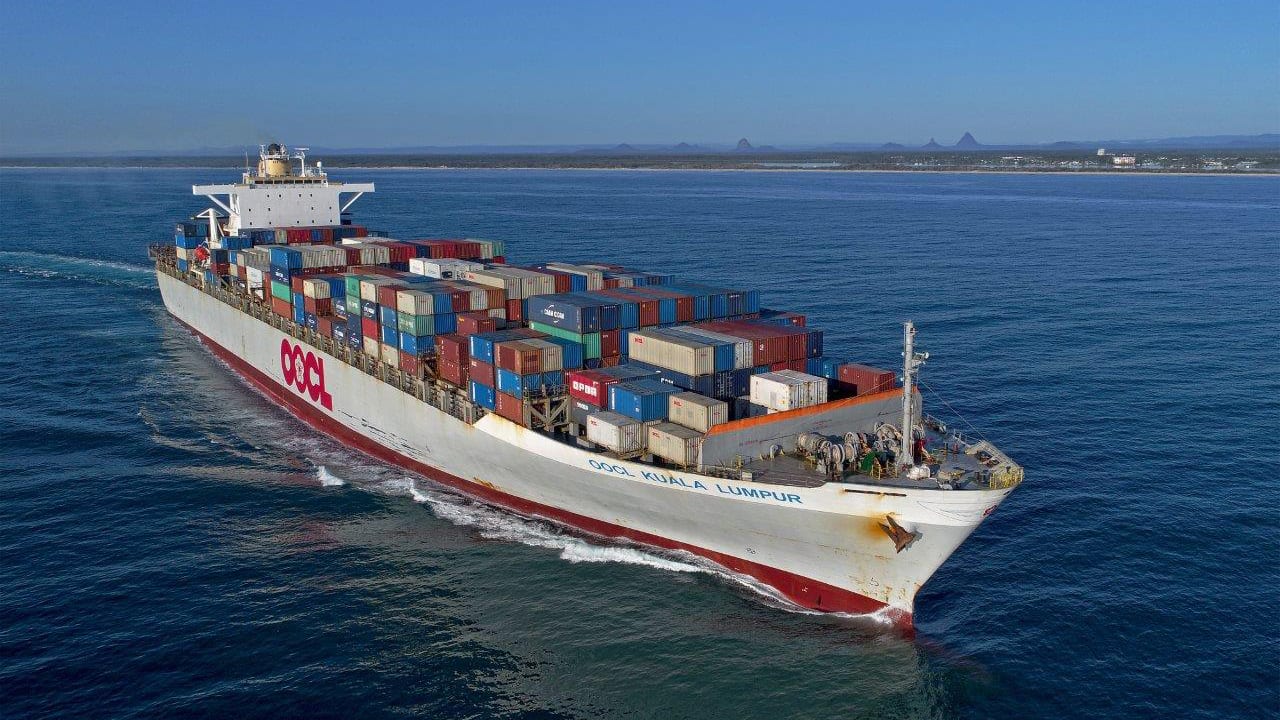Geopolitics, High Bids, and U.S. Pressure Cloud COSCO’s Global Port Ambitions
COSCO Shipping Ports is facing "challenges" with its international investments amid pressures from the U.S. trade war, its managing director said in Hong Kong on Thursday.

Photo courtesy ATSB
The Australian Transportation Safety Bureau is highlighting the importance of applying existing safety management procedures after a containership’s crew member was killed when he became trapped between an elevator cage and a bulkhead.
The 3 June 2018 accident occurred when the electro-technical officer (ETO) of the OOCL Kuala Lumpur, which was preparing to enter Port Botany, Sydney, was testing the ship’s personnel elevator after completing mechanical repairs. While driving the elevator from the cage top, the ETO became trapped between the moving cage and the bulkhead, sustaining fatal injuries.
The ATSB investigation found that the ETO was last seen alone, on top of the elevator cage, in the prescribed safe zone with the elevator control in ‘MANUAL’. The exact circumstances as to how and why the ETO then came to be trapped while the elevator moved between floors could not be determined, the ATSB said.
However, for the accident to have occurred, the ETO had to have moved from the safe zone, the elevator control had to have been changed from ‘MANUAL’ to ‘AUTO’ and the elevator called, according to the ATSB.
The investigation also found that safety barriers prescribed in the electrical work permit were not put in place before the elevator maintenance work commenced. This included that there had been no warning announcement, and, consequently, all of the ship’s crew had not been warned against using the elevator. There were also no warning signs posted at all elevator access doors.
This allowed an elevator call to be made while the work was underway, according to the ATSB.
“Elevator accidents continue to occur around the world and result in about one fatality per year,” said ATSB Director Transport Safety Stuart Macleod.
“Many of these accidents involve the failure to apply existing safety management procedures and/or identified safety barriers that have proven effective in reducing the risks associated with elevator maintenance.”
The injured person was often working alone and riding the elevator cage, Macleod noted.
“For any task that is performed on multiple occasions without any adverse consequence, there is the potential for an individual’s perception of risk, or expectancy of a problem, to decrease,” Macleod said.
“This makes it all the more important to always follow documented procedures and safe working practices, even when the operation is considered safe.”
The accident also highlights that it is imperative that close and careful supervision is maintained for any elevator testing and tasks, the ATSB said.
“Supervisory oversight provides an opportunity for experienced, senior technical staff to scrutinise and assess the plans and intentions of those completing the task. This provides an external check and safety barrier before, and during, the work,” said Macleod.

Sign up for gCaptain’s newsletter and never miss an update

Subscribe to gCaptain Daily and stay informed with the latest global maritime and offshore news


Stay informed with the latest maritime and offshore news, delivered daily straight to your inbox
Essential news coupled with the finest maritime content sourced from across the globe.
Sign Up